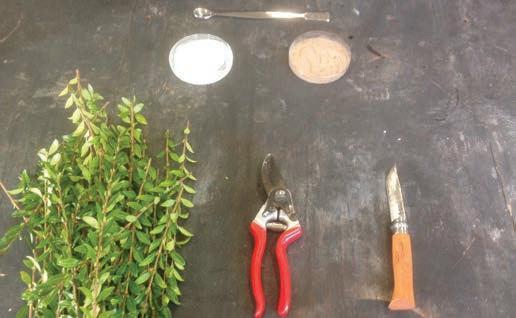Photograph by by-studio
12 / LANDSCAPE
What you see... Renowned nurseryman and tree specialist, Ronan Nangle shares a positive story of how seeing and selecting trees first hand can contribute to the creation of wonderful places Two years ago I contributed to an article on difficulties with landscape specifications and the negative impact they are having on our public spaces. That article set in motion a process which continues today and which will produce Ireland’s first landscape quality management system and standards. The new system will address many of the issues which plague our landscape but it won’t solve one of the simplest yet most damaging challenge: that of blind specification. Blind specification is when a professional specifies plant materials from a list with little or no knowledge of the outcome, or for that matter what they are missing out on. Unfortunately, Ireland has more than its fair share of blind specifiers. The evidence is all too apparent, and too often our cities, town and villages are blighted by the sorrowful site of poorly specified, inappropriately sited and ill maintained trees struggling to cling to life. It breaks my heart. I am all too aware of why blind specification takes place. It’s not an intentional practice, it is one necessitated by limited time, budgets and continual pressure from all sides. Even the most well informed and well intended come under pressure to make hurried choices. So this article is not intended as a critique on poor decision making; it is intended to share a positive perspective, a story of a town created by the sighted with a vision of the future framed by a diversity of well considered and selected trees. 20 years ago, most people would have considered Ballincollig a drab suburb on the western outskirts of Cork city. Though its population was rapidly expanded through the 70s and 80s, it was, like many suburbs
38
around the country, essentially still a village, albeit one that was bursting at the seams. Ballincollig has a military history dating back to the late 1790s where it produced gunpowder for the British Military. The Barracks was still in operation in 2002 when the gates closed for the last time. The Barracks occupied almost the entire northern part of the village and when it was purchased by O’Flynn Construction in the early 2000s big changes were about to happen. The situation was almost unique, not just in Ireland but across Europe. Rarely did a town with a population of over 25,000 people have the chance to directly influence how its future layout would be planned. Aesthetically the town was going to grow from a village to a European style suburb. Ballincollig was going to grow up, and the landscape was going to play a big part.
The Dawning of a New Era By the early 2000s Ballincollig was still growing rapidly and was about to undergo a radical change. It was fortunate in many ways that the main players in this new era were all keenly interested in the landscape of the town, in how it would actually look. It was lucky that O’Flynn Construction were the developers who bought the barracks. The group were high-end operators, interested in quality, and were both the developers and the builders, which always results in a better end product. They were all too aware of the negative impact of short term thinking, of blind specifiers. The local area engineer at the time was Ken O’Riordan, who also had a good eye and was interested in aesthetics. He had a clear vision for the town and got things done.
HORTICULTURECONNECTED / www.horticulture.ie / Autumn/Winter 2016











